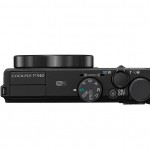Buying your first digital camera need not be a difficult task. The key considerations are between resolution (how many megapixels), features, and price. The other factors will include battery life, memory, camera zoom, as well as the LCD viewfinder. Think about these issues and you'll definitely have a better idea of which digital camera is right for you.
How many megapixels do you need?
Deciding how many megapixels you need is the first important step in finding the right digital camera for you. The image quality of a camera depends on its resolution. Resolution is essentially a measure of image sharpness based on the number of pixels that make up the image. The more pixels the camera has, the sharper the images it can produce. One million pixels equals one megapixel.
If only want to share images via email or online photo albums, then a camera with less than one-megapixel resolution is suitable. Digital cameras in this range are inexpensive and very easy to use.
If your intention is to make 4x6-inch prints, then you should get a two-megapixel digital camera. Cameras in this category are an excellent choice for e-mail, online use, and standard 4x6-inch prints.
If you're considering enlarging some of your digital shots to 8x10 inches, then consider a three-megapixel digital camera. Cameras in this category provide excellent-quality images.
Digital cameras in the four to five-megapixel range are capable of producing professional-quality images. These cameras are more suitable for serious amateur and professional photographers.
How much money do you want to spend?
The prices of digital cameras vary greatly, from less than $50 to more than $4,000. Prices are based primarily on resolution and features. As always, do expect that the latest models will be priced at a premium. Whereas the best bargains are usually last season's models.
Say you're are looking for a simple camera for their kids. Or maybe you just want to start experimenting with digital photography. Then my advice is do not spend too much money. You can always pick up a inexpensive model first, then later upgrade the camera if you so wish.
You'll find that digital SLR models are much pricier. They'll set you back around $2,000! The vast majority of digital cameras are point-and-shoot models which are (thankfully) much cheaper.
Of course, you get what you pay for. A $50 digital camera will not perform as well or provide the same features available with a $300 digital camera. Decide what features you need, then shell out the cash. This will ensure that you will be satisfied with your purchase.
Which digital camera size appeals to you?
I'd say there are three basic sizes of digital cameras - compact, standard and professional. You need to know what size camera suits your needs. Will you travel a lot with your camera? Then a compact model is good. Are you an average home user? Then maybe a standard sized model is suitable. Consider the size factor before making a purchase.
Compact digital cameras are designed to be stylish, tiny and highly pocketable. They're great for taking fun and adhoc shots. Watch out though - they are generally more expensive than standard-sized cameras with similar features.
Standard digital cameras are pretty similar to 35mm point-and-shoot models in appearance and features. Most of them are too large to fit in your pocket, but you might be able to find some reasonably compact models.
Professional digital cameras will give you additional features like interchangeable lenses, flashes, and other accessories. This category includes Professional SLR (Single Lens Reflex) cameras. Designed for professional and serious amateur photographers who require a high degree of manual control.
Battery Life/Power
This is one of the most overlooked factors in choosing a digital camera. Always look for a model with a long lasting battery. And remember - the more you use the LCD viewfinder, the faster the batteries will go. Many digital cameras are packed with battery chargers and rechargeable batteries, but some are not. Do bear in mind that buying rechargeable batteries and a charger will typically add from $30 to $100 to the base cost of the camera.
How much memory?
Digital cameras store photos in memory. Traditional cameras use film. What's the difference? Well, digital camera memory is reusable! The capacity (size) of the image memory storage will determine how many images you can store.
There are two kinds of memory: built-in memory and removable storage memory. Most cameras use removable storage memory to record images. The most popular forms of removable storage memory are Compact Flash cards , Sony Memory Sticks, and SmartMedia Cards. These days, memory sizes of 128MB and 256MB are considered to be the standard for most cameras.
Optical Zoom & Digital Zoom
It's useful to know that many digital cameras provide both an optical and a digital zoom. It's important to understand the difference between the two. Photo quality is not compromised by optical zoom. But digital zooms use internal software to magnify a small area of the picture, which results in a noticeable loss of image quality.
LCD Viewfinders
When buying digital cameras, one consideration might be the liquid-crystal display (LCD) viewfinder. It allows you to see what your picture will look like before you take it. LCD viewfinders also permit you to view saved images and delete the ones that you don't like.
Conclusion
If you've always wanted to buy a digital camera, now is the time! A couple of years ago, an average two-megapixel digital camera cost about $800. Today, an average two-megapixel digital camera costs less than $300. So don't hesitate, invest in a good camera today.




 LinkBack URL
LinkBack URL About LinkBacks
About LinkBacks



 Reply With Quote
Reply With Quote








